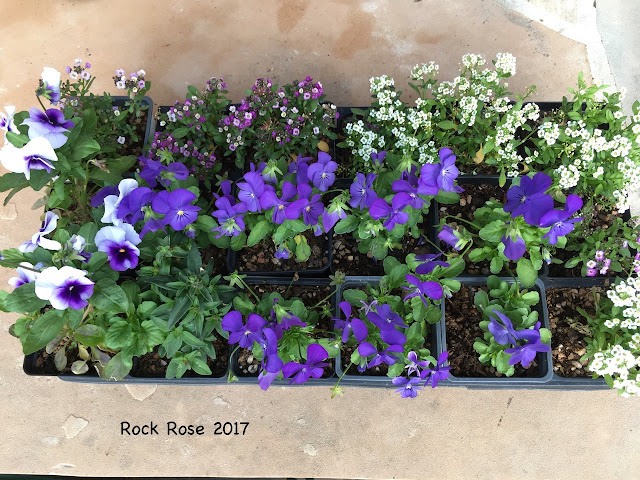Not only rock gardens but ponds, waterfalls and stepping stones to climb over.
And in the park there were some fabulous rock structures with bridges and places to climb. Such a fabulous place for children to play. The original bridge was not made to last and was replaced with something more suitable by the time I came along. Our family made frequent visits to both these places and I got to run around, climb and explore.
And my grandparents, who built their house and garden in the 1930s, also had a beautiful rockery. But all that stone for these structures had to be transported to our sandy coast from other parts of Lancashire and Yorkshire, where there were abundant areas of limestone and limestone pavements. Fortunately the time came when someone put a stop to the pillaging of these natural areas and rock gardens went out of fashion.
Fast forward to 1994, Austin, Texas.
This is the first place I have lived where I had a rock quarry in my garden. Our garden is situated on the Edward's plateau, created millions of years ago, from an area once covered by shallow seas. A vast bedrock of limestone sits beneath us. Much of the rock has been fractured by earth movements and water creating some beautiful if not heavy chunks of rock. At our first house, built in 1994, and barely a stone's throw from where we live now, I was excited to be able to to recreate some of those memories from my childhood. The land behind the house rose steadily and to help with run off from Texas deluges we cleared an area behind the house and then hit rock. It was hard graft taking out tree stumps( David borrowed a come along from someone at work! only in Texas) and when we couldn't remove some of the large rocks we just incorporated them into a rockery.
At one end we hit ledge stone so we decided to make wide steps to access the upper level where we planted buffalo grass. We also created a little patio. I'm glad I took these photos because I had completely forgotten how it looked. When we sold the house the new people put in a pool at the top. I wonder if they kept our rock work?
And so to this house, which we built in 2000, because it was going to be my last chance to have a flat lot with gardens protected from deer. I had some idea about courtyards and herbaceous borders. Clearly I had forgotten about what was beneath my feet, which would make it impossible without raised beds.
With our garden being one of the gardens on the Garden Bloggers' Fling next May I thought to give our future visitors a little background to my garden style, aided and abetted by my dear husband, David, without whom much of this would never have happened.
Garden no1, The English Garden
Clearly spurred on by the success at our previous house I collected every flat rock that ever appeared when we were building this house. I was down here every day making a monumental pile at the back of the lot. I know the builder thought I was crazy. (Little did I know what was yet to come.) It was a project dear to my heart. To create a dry stone wall, so prevalent in northern England, which would follow the curve of the existing garden wall.
 |
| The builder leaves the scene |
My one regret is that I have never managed to get those beautiful crevice flowers that you see cascading from English garden walls. I refer to the campanulas.
But one thing led to another. More circles; circles of brick infilled with stone to make a patio, and circles of stone to enclose a bird bath and roses, and half circles on brick and inlaid stone to form landing areas from the house and archway. We were lucky to find a pallet of bricks in the perfect color at the Habitat for Humanity re-store. David built the brick surrounds, and together we cemented and mortared the stones. Not a job I will forget. I then suggested some circular stepping stones would break up the expanses of gravel. David used various molds to make the stones filling them to within 2" of the top with sand and pouring concrete on the top. To make the stones look more natural I would imprint them using various rough rocks. Sometimes I was out there in the dark.
This patio is a favorite place to have breakfast in the summer, sheltered, as it is, from the rising sun.
And in keeping with all those circles a few homemade hypertufa balls and glass balls from defunct outdoor lighting break up the expanse of gravel.
Lots of plants self sow in the gravel. Bluebonnets, larkspur, nigella in the spring and narrow leaf zinnias and gomphrenas in the fall.
All this rock clearly went to our heads because next David decided turn his hand to building a retaining wall where there had once been an ugly slope. You can just see the wall through the gate below.
No rock was too big for him to haul uphill from our "quarry" He estimates he moved several tons of rock. This area, outside our garden walls links the small Secret Garden with the English Garden. It is open to deer with no irrigation so a restricted planting.
And on garden does lead to another. Through the archway the sunken garden awaits our visitors.
I hope you will come back to read all about the rocks in there.





















































